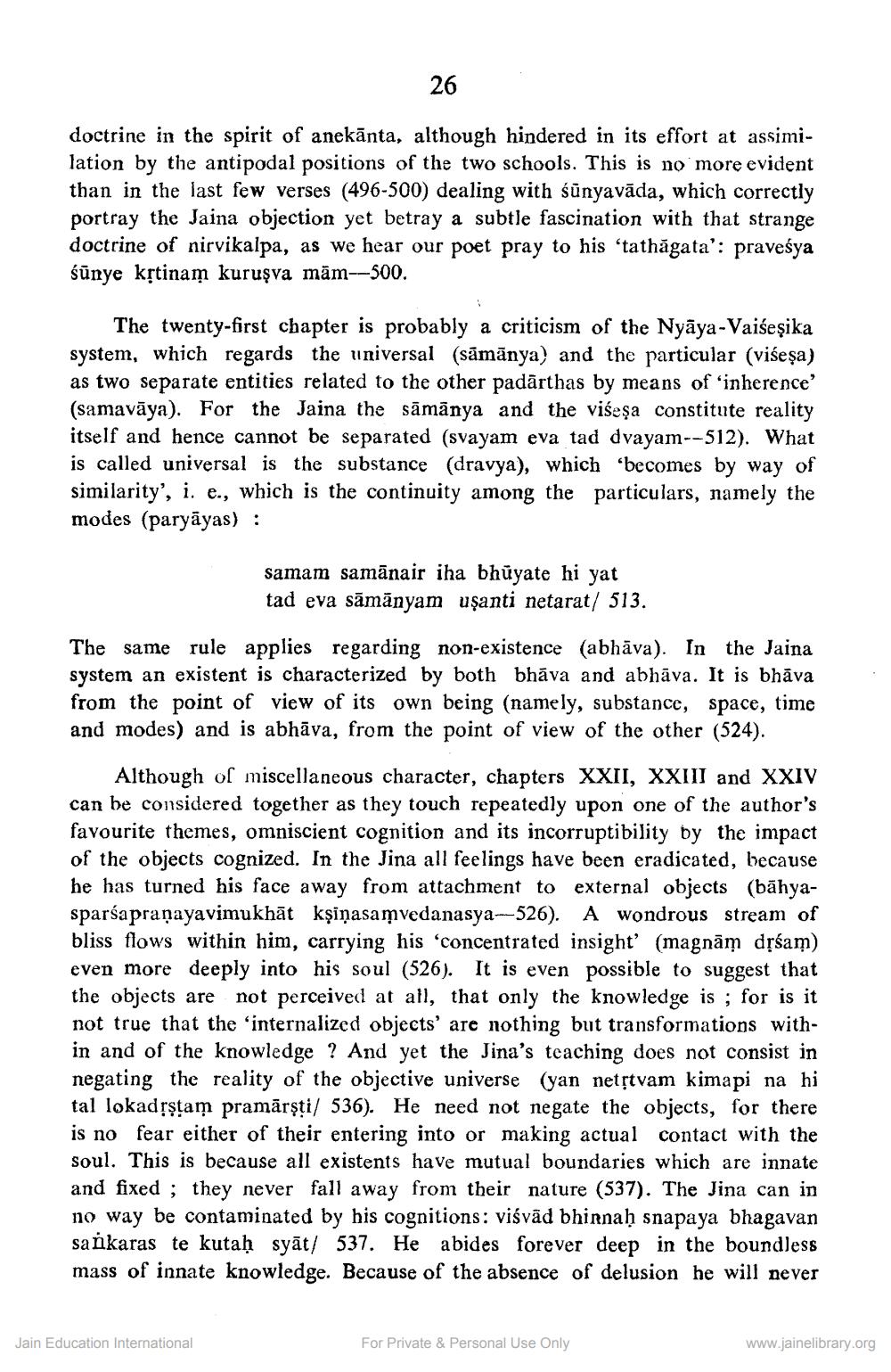________________
26
doctrine in the spirit of anekānta, although hindered in its effort at assimilation by the antipodal positions of the two schools. This is no more evident than in the last few verses (496-500) dealing with śūnyavāda, which correctly portray the Jaina objection yet betray a subtle fascination with that strange doctrine of nirvikalpa, as we hear our poet pray to his 'tathāgata': praveśya śūnye křtinam kuruşva mām--500.
The twenty-first chapter is probably a criticism of the Nyāya-Vaišeşika system, which regards the universal (sāmānya) and the particular (višeşa) as two separate entities related to the other padārthas by means of inherence' (samavāya). For the Jaina the sāmānya and the višeşa constitute reality itself and hence cannot be separated (svayam eva tad dvayam--512). What is called universal is the substance (dravya), which becomes by way of similarity', i. e., which is the continuity among the particulars, namely the modes (paryāyas):
samam samānair iha bhūyate hi yat tad eva sāmānyam uşanti netarat/ 513.
The same rule applies regarding non-existence (abhāva). In the Jaina system an existent is characterized by both bhāva and abhāva. It is bhāva from the point of view of its own being (namely, substance, space, time and modes) and is abhāva, from the point of view of the other (524).
Although of miscellaneous character, chapters XXII, XXIII and XXIV can be considered together as they touch repeatedly upon one of the author's favourite themes, omniscient cognition and its incorruptibility by the impact of the objects cognized. In the Jina all feelings have been eradicated, because he has turned his face away from attachment to external objects (bāhyasparsapranayavimukhāt kşiņasamvedanasya--526). A wondrous stream of bliss flows within him, carrying his 'concentrated insight' (magnäm dịšam) even more deeply into his soul (526). It is even possible to suggest that the objects are not perceived at all, that only the knowledge is ; for is it not true that the 'internalized objects' are nothing but transformations within and of the knowledge ? And yet the Jina's teaching does not consist in negating the reality of the objective universe (yan netstvam kimapi na hi tal lokadsştam pramārsti/ 536). He need not negate the objects, for there is no fear either of their entering into or making actual contact with the soul. This is because all existents have mutual boundaries which are innate and fixed; they never fall away from their nature (537). The Jina can in no way be contaminated by his cognitions: viśvād bhinnaḥ snapaya bhagavan sankaras te kutaḥ syāt/537. He abides forever deep in the boundless mass of innate knowledge. Because of the absence of delusion he will never
Jain Education International
For Private & Personal Use Only
www.jainelibrary.org




